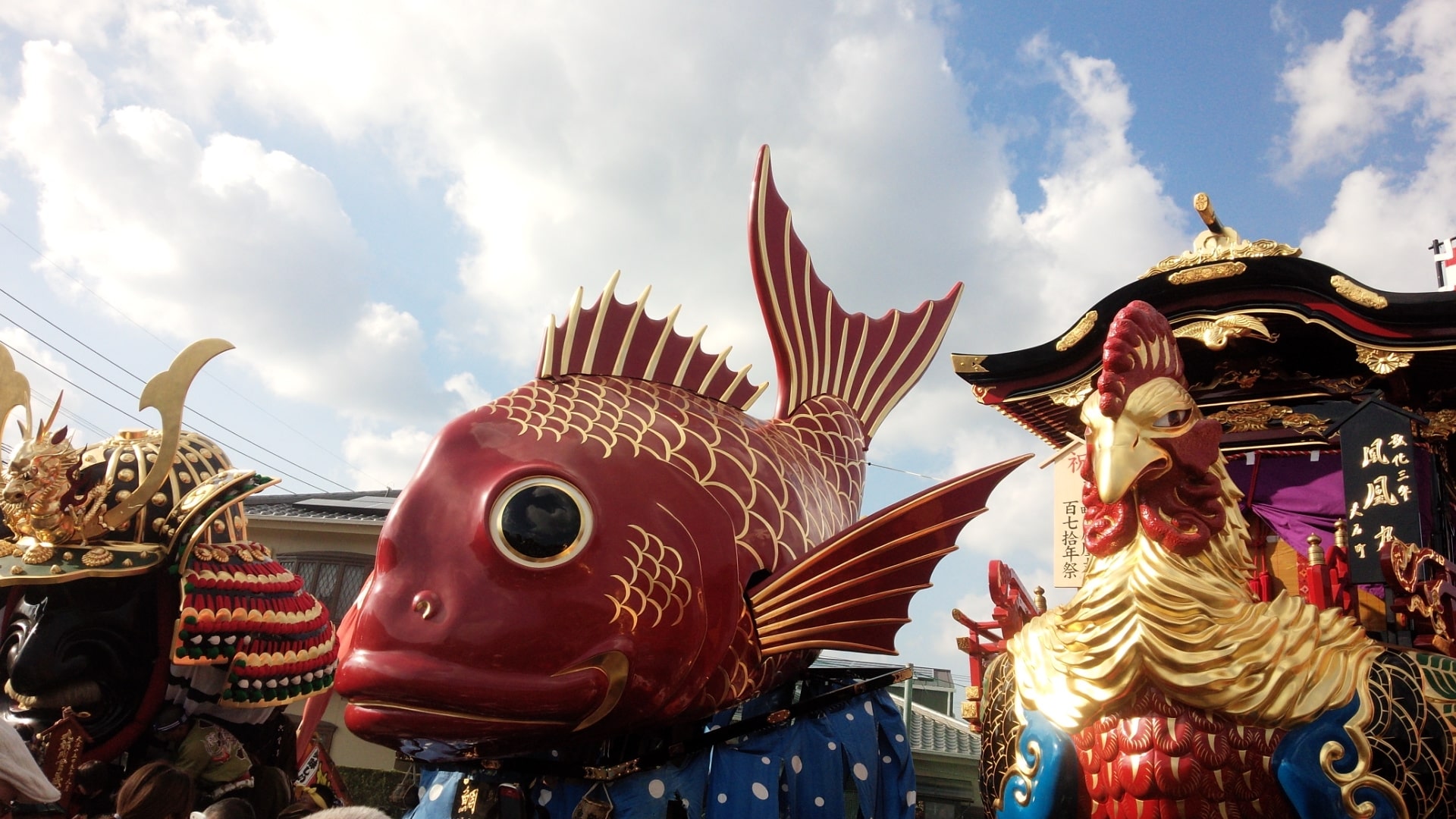November: Karatsu Kunchi Festival
November 01, 2023

Katratsu Kunchi Festival, Saga(Google Maps)
As a procession of fantastical creatures are paraded through the streets of Karatsu, visitors may think they’ve stepped into a scene from a Ghibli movie. This unusual festival, however, is an annual celebration of bountiful harvests and one of the most popular events in Saga Prefecture in northwest Kyushu.
Taking place over three days in early November the Karatsu Kunchi Festival was designated a UNESCO Intangible Cultural Heritage in 2016. Providing both autumnal thanks and harvest offerings, the festival has been celebrated since the Kanbun Era (1661–1673) in the Edo Period and sees floats and mikoshi (portable shrines) carried from Karatsu Shrine to Nishinohama Beach. While the floats would originally follow their own paths through local districts, there has been a unified march the night before the procession since 1962, with floats joining together en route to gather before Karatsu Shrine.
The hikiyama (floats) are each masterpiece in their own right, carefully created by the residents of each district. They accompany the mikoshi as a form of protection for the gods within, with creatures dedicated to the shrine over the centuries. Some of the most famous creations are the Sea Bream from Uoya-machi, the Green and Red Lions from Naka-machi and Katana-machi respectively, the Samurai Helmet from Gofuku-machi and the Boat of Seven Treasures from Egawa-machi. With 14 floats in total, the procession is impressive, although one—the Black Lion of Konya-machi—was lost in the Meiji Period.

Karatsu Shrine, Saga(Google Maps)
The floats seen today all date back to the 19th century and are carefully repaired and maintained by local craftsmen. Each one has taken approximately three years to make using wood, clay, layers of washi paper and linen before being decorated with lacquer and delicate touches of gold and silver. Unsurprisingly they weigh between 2–4 tonnes and require the strength of hundreds of locals to pull them along their annual route with chants of “En-ya!” and “Yoi-sa!” ringing through the night.
Lasting three days, the event is launched with the firing of a burning arrow into the sky at 7:30pm on day one, after which the first hikiyama begins its journey. The procession is joined by each float in order of creation, led by the Red Lion and ending at the shrine with the Boat of Seven Treasures at around 10pm. Each is illuminated with paper lanterns, the sight is incredible, providing a dramatic start to the days ahead. The second day sees a morning lion dance to purify evil spirits before the mikoshi and guardian floats depart for Nishinohama Beach. As the locals come together to pull their multi-tonne hikiyama through the sand, the festival spirit is at its height. The third and final day sees a float parade through the town before they are returned to the Exhibition Hall for a year or rest and repair. Located right beside the shrine, the Exhibition Hall offers a year-round chance to admire the creations up close while also learning about the history of the festival.

Tsugani (river crab)
Between events, be sure to try the specialty of tsugani (river crab) or a whole simmered grouper —both sourced from the Sea of Genkai and sure to delight the tastebuds of any traveler. Known for its pure water sources and located in the region of shochu (a Japanese distilled spirit) lovers, Saga even has its own certified stamp for products using only local ingredients. Try sipping sake or shochu from traditional Karatsu-yaki (local pottery) and you’ll find it has a distinct flavor and feel that can’t be beaten.
Surrounded by thousands of onlookers, countless food stalls and a great many strong locals, the Karatsu Kunchi Festival is a bustling time for the city. Timed to coincide with the annual Saga International Balloon Fiesta, it is an incredible time to visit this underrated yet beautiful prefecture.
For more details, contact DMC Japan to discuss ideas, locations and rates.
Contact Us


